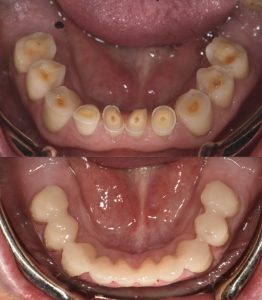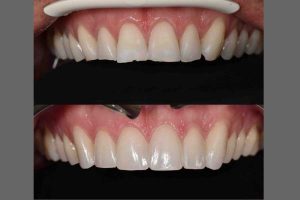What are Composite Fillings and Composite Resin?
Composite Fillings are generally made from composite resin. Because of their colour, they blend in more naturally with the rest of your teeth. These days, almost all fillings are made from composite resin because they look better than their silver counterparts and they are less invasive.
There are other types of Composite Fillings which are made from porcelain. We call these inlays or onlays and these are used to strengthen the tooth. They are made outside of the mouth and then bonded to the tooth. This is different to the composite resin fillings which are made directly in the mouth.

The History of Dental Fillings
Dental fillings have been around longer than you may realise. They date back around 6000 years. The earliest dental fillings ever found were in the body of a man found in Trieste, Italy. His fillings were made from beeswax. The earliest use of amalgam was found in a Chinese medical text from 700AD.
Major breakthroughs in dentistry occurred in 1530 with the publication of Artzney Buchlein’s book The Little Medicinal Book for All Kinds of Diseases and Infirmities of the Teeth. This German text contained all kinds of useful information including how to make gold fillings.
It wasn’t until 1746 that dentistry saw the first attempts at making crowns that matched existing teeth. A procedure was developed that used white enamel to make gold crowns blend in with the surrounding natural teeth.
Nicolas Dubois made a breakthrough in dentistry in 1789 when he introduced porcelain. He was the first person to get a patent for porcelain teeth. Commercial manufacturing of porcelain teeth did not begin until 1825. Samuel Stockton was the world’s largest manufacturer of orthodontic supplies.
The late 1800s saw the use of amalgam fillings as a more economical alternative to gold. Although initially, the technique did not catch on, amalgam fillings eventually become popular. The fillings became controversial after warnings from the American Society of Dental Surgeons about the amount of mercury in amalgam. However, they continued to be used and were the most popular form of filling during the 19th and 20th centuries.
Fast forward to the 21st century. Today, dentists have a wider range of techniques and materials than ever before. Composite resin is the most common form of filling material. It is the most versatile material for this time of restoration and it is also mercury-free.

The Benefits of Composite Fillings
There are numerous benefits from having composite filings, including:
- Safety: Around 50% of amalgam filling consists of mercury. Composite resin fillings are made from acrylic resin that is reinforced with ceramic particles such as silica or powdered glass quartz. As well as not being a health risk, resin fillings are more durable than amalgam because they do not expand and contract due to changes in temperature the way that metal fillings do. This means they put less stress on your teeth.
- Natural appearance: Composite fillings are designed to match the colour of your natural teeth. So, there are no more flashes of metal when you laugh or smile.
- Strength: Unlike amalgam fillings, composite fillings are bonded directly onto the tooth. Once the resin fills a cavity, the tooth is much stronger than it was before. Because amalgam fillings do not bond to the tooth, they cannot support the tooth when it flexes on eating.
What is Composite Resin?
Composite resin was first introduced to dentistry during the 1960s. It is a tooth-colored resinous material made from Bis-GMA and other dimethacrylate monomers. Over the years composite resins have been strengthened so that they can now withstand the pressure of the molars. This means they can now be used to fill the front and back teeth. Resin is not only used to restore cavities. It can also be used to improve the shape and color of the teeth.
Why Replace Your Silver Fillings?
It’s easy to see why metal fillings have lost their popularity. But thousands of people throughout the world still have them. If you are one of them, should you have them replaced with composite fillings?
The process isn’t always necessary, particularly if your teeth are healthy and your fillings are still in good shape. But if your metal fillings are loose or damaged and your cavities are exposed, replacing them with Composite Fillings is definitely a good idea.
You may want to replace your silver fillings even if they are not damaged. You may prefer not to have any visible metal in your teeth. If so, replacing your fillings can make your teeth look natural and uniform. Talk to your dentist about your options.

What Factors Affect The Life of a White Filling?
Several different factors including:
- The location of the filling
- The size of the filling
- Grinding or clenching your teeth
- What you eat and drink
- Your oral hygiene practices


